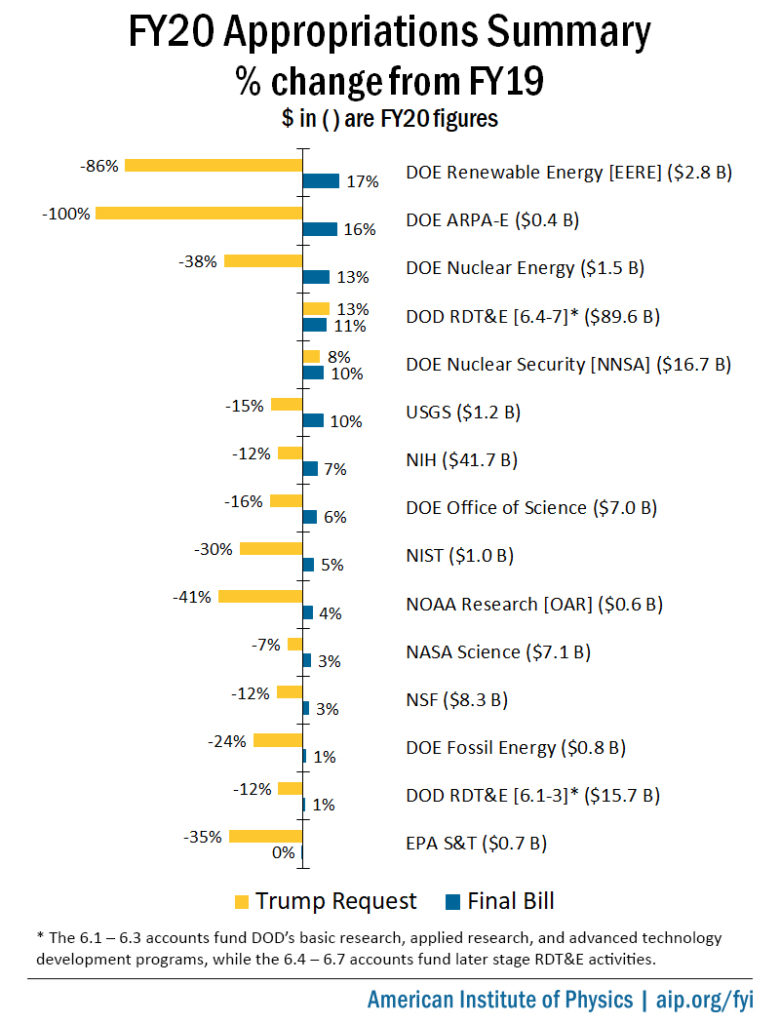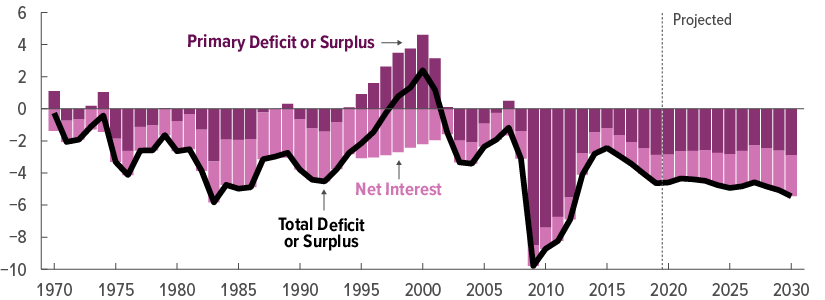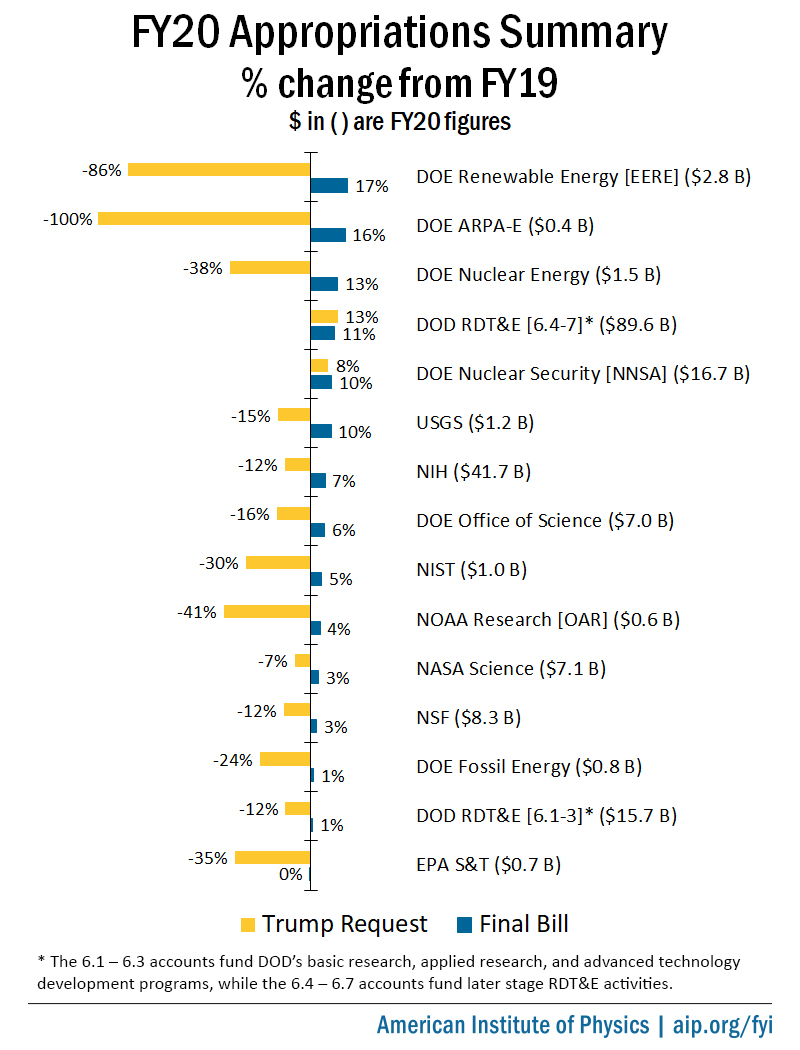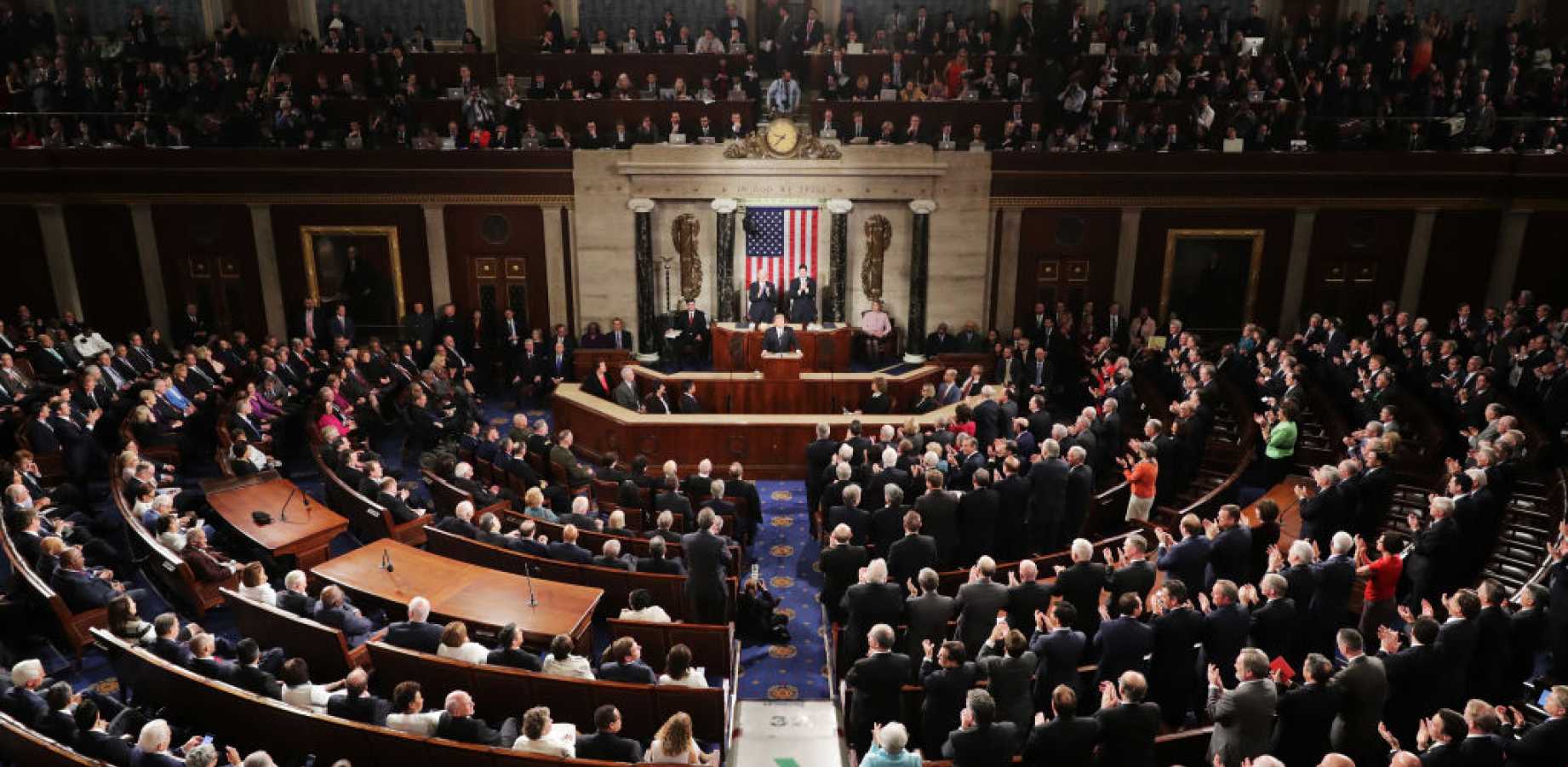
For almost four years, the executive branch of the United States government has been advocating steadily for a decline of science funding for the nation. In spite of this, the U.S. Congress has acted as a firewall against these requests, effectively making every budget request for cuts to scientific investment dead-on-arrival (with some notable exceptions, of course, in environmental science, where the executive branch has done serious damage aided by the Congress). In this post, I’ll focus on the U.S. Department of Energy’s Office of Science, NASA Science, and the National Science Foundation, as these are the primary funders of non-applied, curiosity-driven science in the U.S. I realize I am leaving the National Institutes of Health (NIH) off of this (among others – see above); NIH’s scientific investment is geared toward actively improving human health, which while valuable definitely falls under the idea of “applied science”. Here, I want to focus on those agencies with the clearest pure-science missions, even if I certainly value human health.
Before the Current Era
Presidents before the current era may not have been total friends of all branches of scientific investigation (George W. Bush put strict limits on stem cell research and Barack Obama was not an outspoken friend of curiosity-driven research); but neither were they total enemies of science, opposed in nearly every way to its support and advance. The current era sees total animosity toward science. As the sole means by which humans establish reliable evidence on which to base policy, decisions, and planning, science could be perceived as a clear enemy of the impulse- and propaganda-based approaches of the current government.
George W. Bush pushed actively for the America Competes Act, especially in one of his last State of the Union Addresses. Barack Obama created the mighty “Brain Initiative” and made a clear priority of his administration the greater knowledge of the human mind across all scientific boundaries. This administration has no such noble goal, nor have they been able to (or interested in) articulate one. Since public scientific investment has been a major driver of the U.S. economy, this is curious at best given the claims of the administration to be acting in the best interests of the nation. It reveals the naked lie of such claims.
Cut, Cut, Cut
Whereas non-discretionary spending (e.g. on defense or social programs like Medicare and Medicaid and Social Security) represent most of the outlays of the Federal Government, discretionary spending … and science in particular … have been favorite targets especially of the current administration. Science falls under the umbrella of discretionary spending, and certainly has been victimized along with many other such areas of spending.
For example, the current administration inherited an FY17 budget that allocated the following spending on the DOE Office of Science (DOE-SC) and the National Science Foundation (NSF) [1]:
- DOE-SC: $5.4 billion
- NSF: $7.5 billion
- NASA Science: $5.8 billion
In their first budget proposal of this administration, the Office of Management and Budget proposed (with the support of the President) the following cuts:
- DOE-SC: -17%
- NSF: -11%
- NASA Science: -1%
This was the opening volley of this administration in for FY2018, the first budget proposal of this administration: cut science hard. (I will note the Environmental Protection Agency was proposed to be cut -36% … the funding equivalent of tying off the arms until they die from oxygen deprivation)
Congress acted as the firewall against the President’s impulses. This has been the theme each year since this administration took control of the executive branch. The table below tells the story.
| Agency | FY18 Request (Enacted) | FY19 Request (Enacted) | FY20 Request (Enacted) |
| DOE-SC | -17% (+16%) | -14% (+5%) | -16% (+6%) |
| NSF | -11% (+8%) | -4% (+4%) | -12% (+3%) |
| NASA Science | -1% (+4%) | -5% (+11%) | -7% (+3%) |
You can see the trend. The President proposed to slash. The Congress increases funding at or above the level of inflation, holding the line (and in some cases, making clear statements about funding projects and agencies). In many ways, this has been the quiet battle of the Congress against the Presidency.
No words for science
Presidents in previous administrations have included mention of scientific advancements, investments, or scientific research itself in their State of the Union speeches. Bush advocated for the COMPETES Act. Obama touted investments in basic research as a means to maintain the U.S. edge in areas of science and technology.
What has the current president said?
In short: nothing. He touts how in the past Americans have pushed the boundaries of science, or advanced science, but spoke nothing of policies meant to sustain investment in this transformative area. Where policies are laid out, they have to do with applications to human health … the economic driving force of curiosity-based research, basic research, is left out of the speech. In the meantime, destructive fiscal policies have led to the ballooning of the federal deficit without the use of federal investment to spur new markets or ideas. This is a dark economic time in the U.S. – a kind of dark magic is worked by the administration, a shell game that pays the present by robbing the future in a way not seen recently in American politics.

The FY2021 budget proposal from the executive branch is about to land this week. Early signs indicate the plan is to maintain the deficits, rather than working to decrease them [3]. If past is prologue, the proposals for cuts will land on deaf ears in Congress. This, coupled with increased defense and border security measures, as well as expanding social program obligations, will combine to balloon the deficit. It does make me wonder what steps that Congress will take this time to address the gap between spending and budgets.
[1] Source: American Institute of Physics. https://www.aip.org/fyi/federal-science-budget-tracker
[2] Congressional Budget Office projections for the next decade: https://www.cbo.gov/publication/56073



